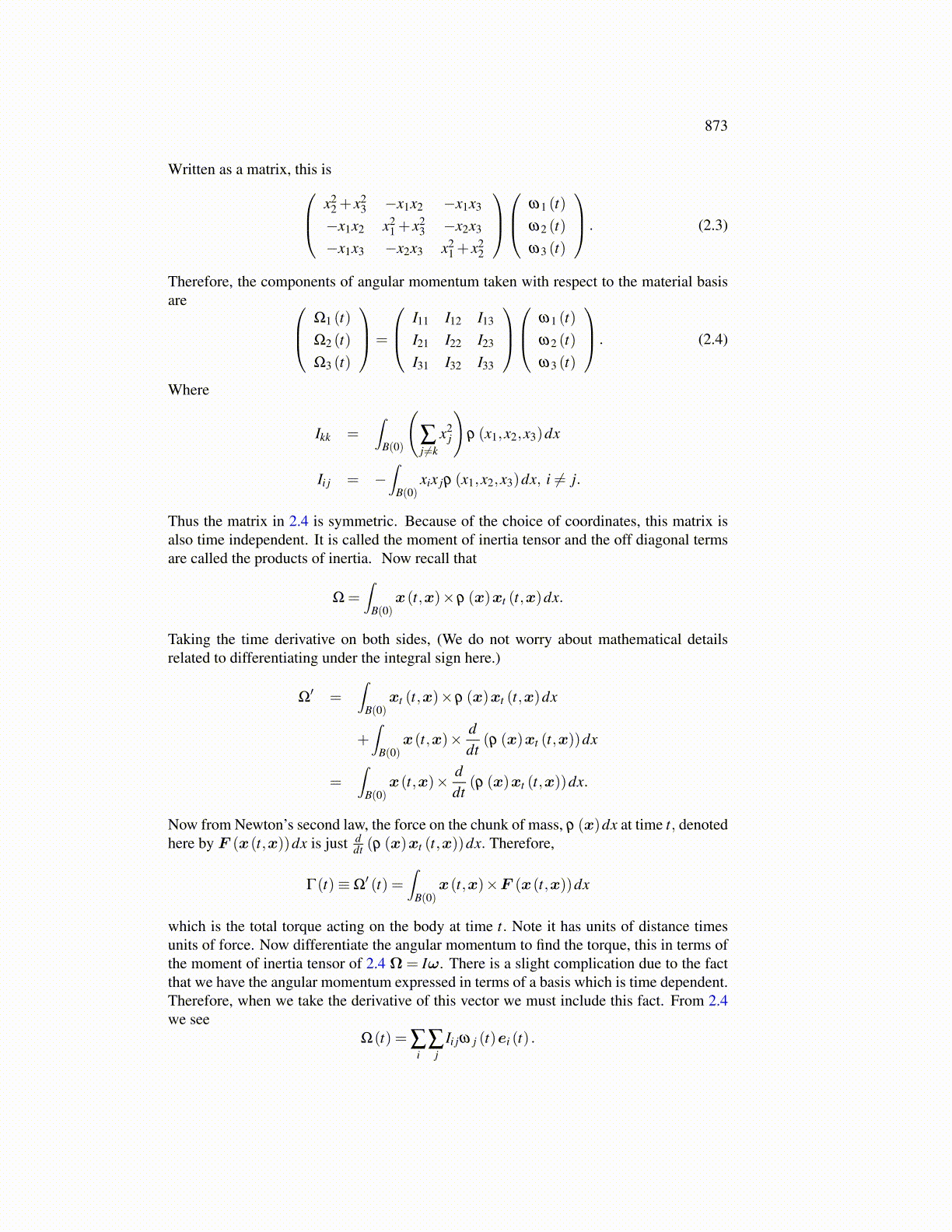
873
Written as a matrix, this is x22 + x2
3 −x1x2 −x1x3
−x1x2 x21 + x2
3 −x2x3
−x1x3 −x2x3 x21 + x2
2
ω1 (t)
ω2 (t)ω3 (t)
. (2.3)
Therefore, the components of angular momentum taken with respect to the material basisare Ω1 (t)
Ω2 (t)Ω3 (t)
=
I11 I12 I13
I21 I22 I23
I31 I32 I33
ω1 (t)
ω2 (t)ω3 (t)
. (2.4)
Where
Ikk =∫
B(0)
(∑j ̸=k
x2j
)ρ (x1,x2,x3)dx
Ii j = −∫
B(0)xix jρ (x1,x2,x3)dx, i ̸= j.
Thus the matrix in 2.4 is symmetric. Because of the choice of coordinates, this matrix isalso time independent. It is called the moment of inertia tensor and the off diagonal termsare called the products of inertia. Now recall that
Ω =∫
B(0)x(t,x)×ρ (x)xt (t,x)dx.
Taking the time derivative on both sides, (We do not worry about mathematical detailsrelated to differentiating under the integral sign here.)
Ω′ =
∫B(0)
xt (t,x)×ρ (x)xt (t,x)dx
+∫
B(0)x(t,x)× d
dt(ρ (x)xt (t,x))dx
=∫
B(0)x(t,x)× d
dt(ρ (x)xt (t,x))dx.
Now from Newton’s second law, the force on the chunk of mass, ρ (x)dx at time t, denotedhere by F (x(t,x))dx is just d
dt (ρ (x)xt (t,x))dx. Therefore,
Γ(t)≡Ω′ (t) =
∫B(0)
x(t,x)×F (x(t,x))dx
which is the total torque acting on the body at time t. Note it has units of distance timesunits of force. Now differentiate the angular momentum to find the torque, this in terms ofthe moment of inertia tensor of 2.4 Ω = Iω. There is a slight complication due to the factthat we have the angular momentum expressed in terms of a basis which is time dependent.Therefore, when we take the derivative of this vector we must include this fact. From 2.4we see
Ω(t) = ∑i
∑j
Ii jω j (t)ei (t) .